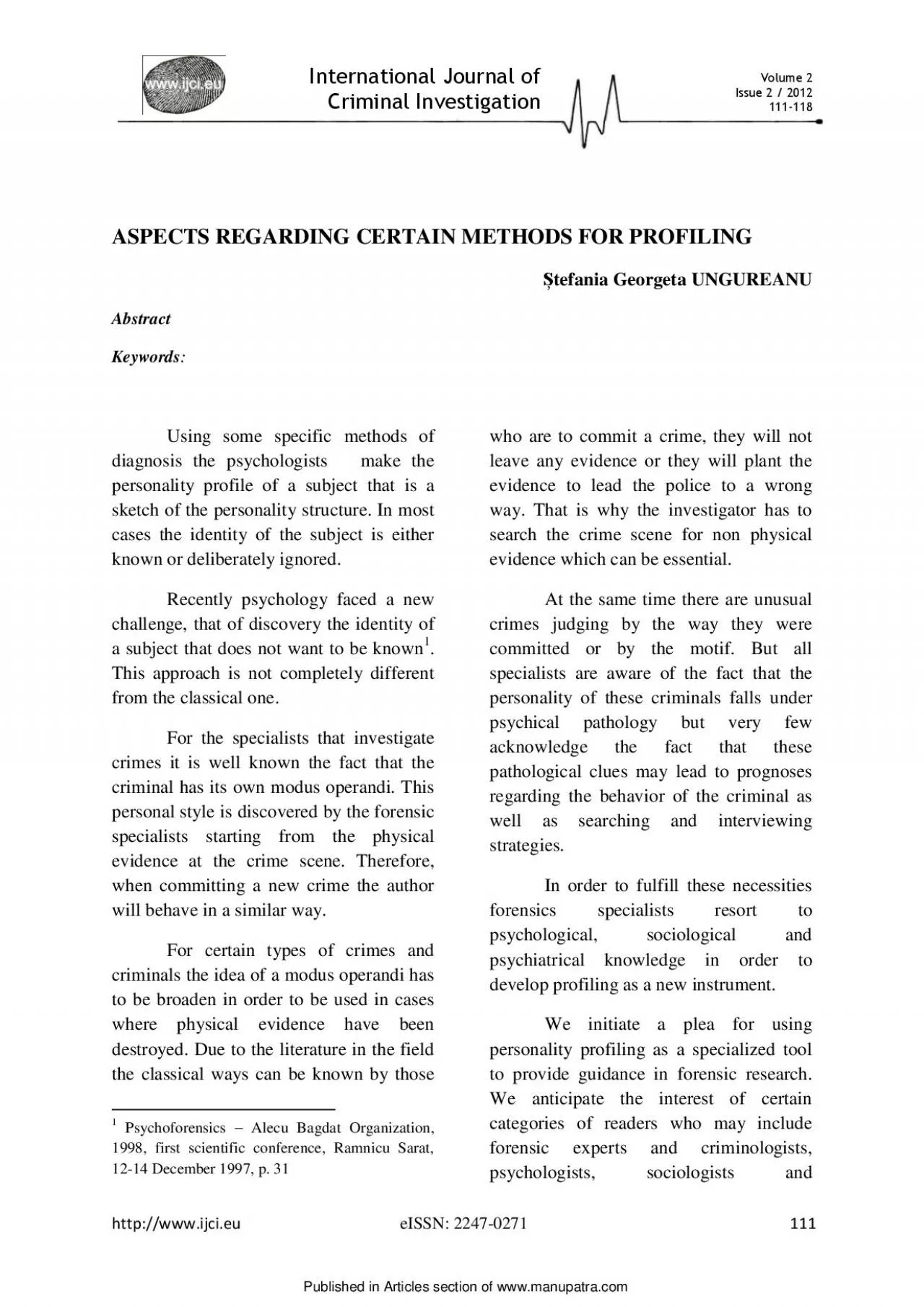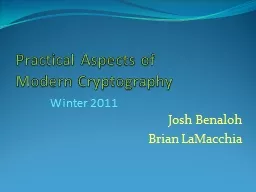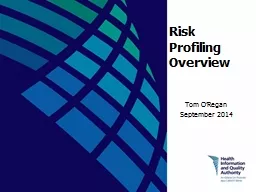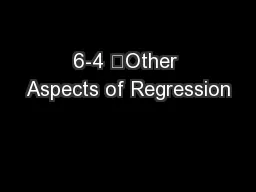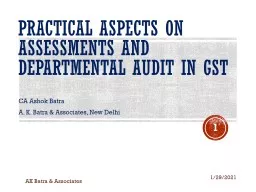PDF-ASPECTS REGARDING CERTAIN METHODS FOR PROFILING
Author : danya | Published Date : 2022-08-25
International Journal of Criminal Investigation psychiatrists who are faced with domestic violence issues and are training students to work in such areas The main
Presentation Embed Code
Download Presentation
Download Presentation The PPT/PDF document "ASPECTS REGARDING CERTAIN METHODS FOR PR..." is the property of its rightful owner. Permission is granted to download and print the materials on this website for personal, non-commercial use only, and to display it on your personal computer provided you do not modify the materials and that you retain all copyright notices contained in the materials. By downloading content from our website, you accept the terms of this agreement.
ASPECTS REGARDING CERTAIN METHODS FOR PROFILING: Transcript
Download Rules Of Document
"ASPECTS REGARDING CERTAIN METHODS FOR PROFILING"The content belongs to its owner. You may download and print it for personal use, without modification, and keep all copyright notices. By downloading, you agree to these terms.
Related Documents

